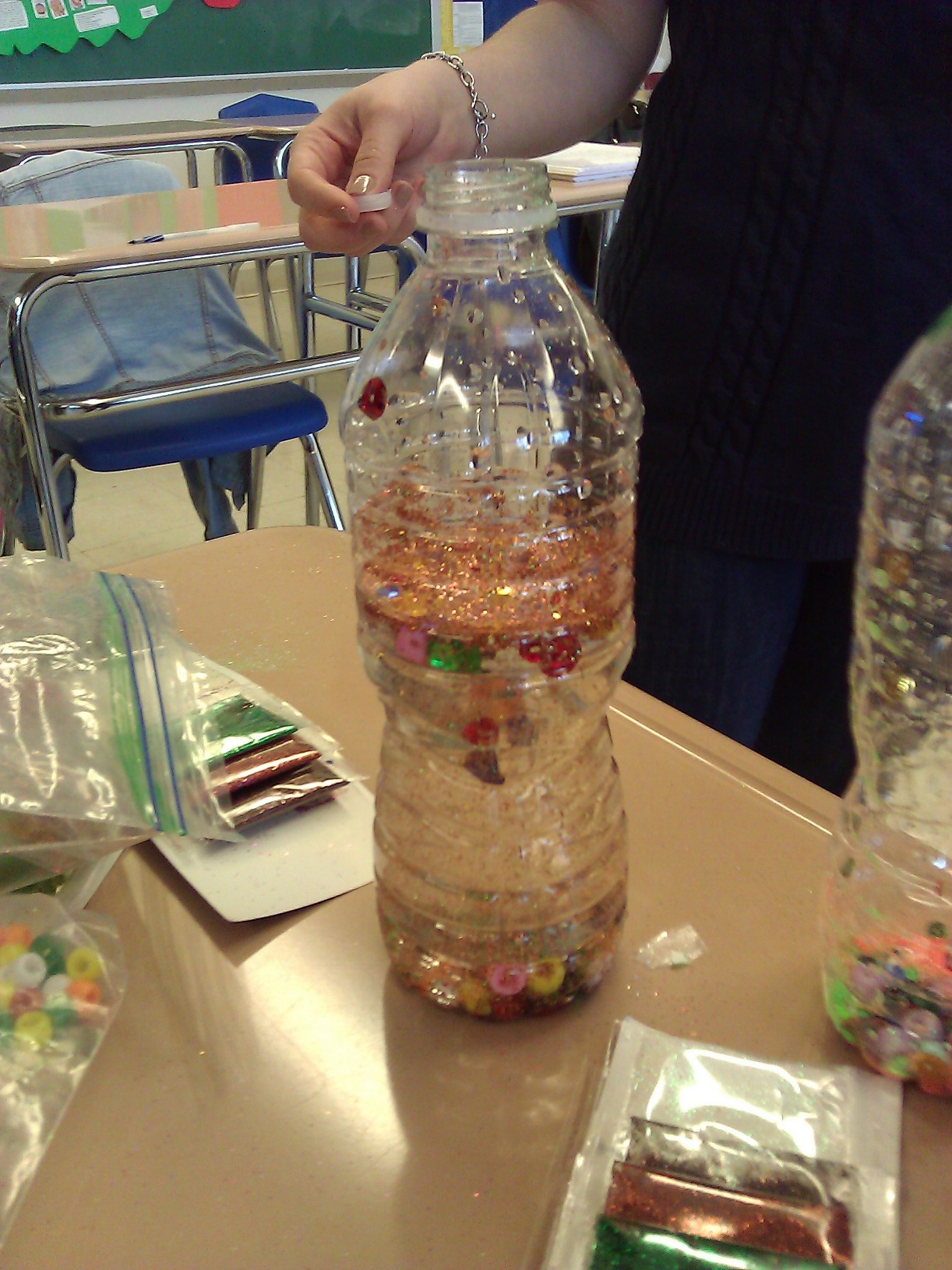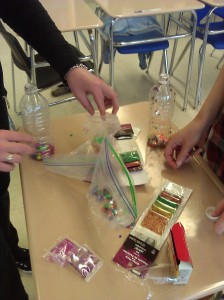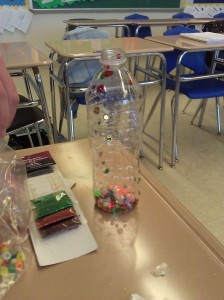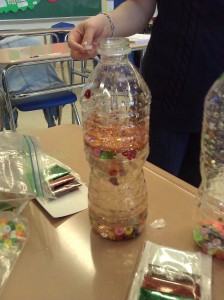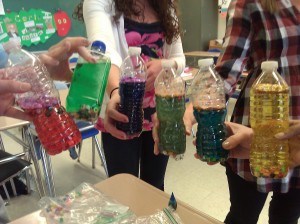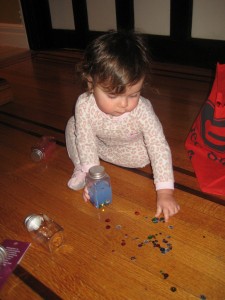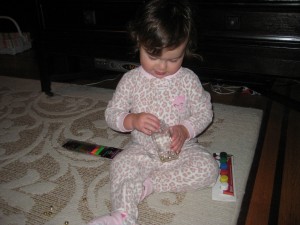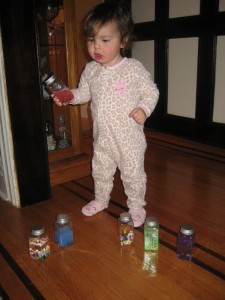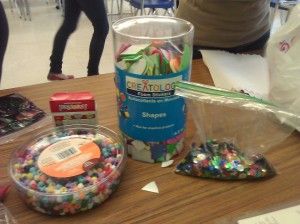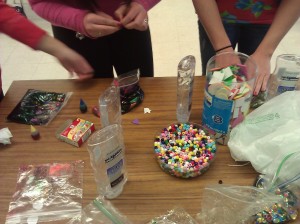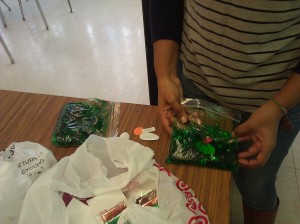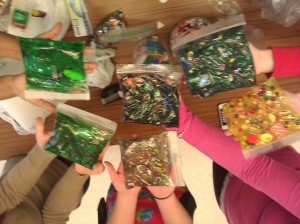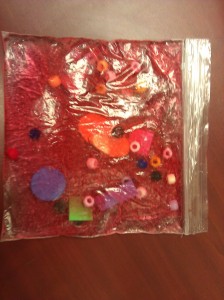Perception is the first area of development that any parent or caregiver of infants and toddlers should learn about. By now we know that infants and toddlers learn by exploring with their five senses. Sensory experience links to motor development and early sensorimotor experience provides the basis for cognitive development. Perception is the ability to take in and organize all of these sensory experiences. Sensory Integration is the process of combining and integrating information across the senses. It is critical to the development of perception and helps children apply information learned from one sense to another sense.
Making sensory bottles and sensory bags for your infants and toddlers to explore are excellent additions to the sensory materials in your home or classroom. They provide an opportunity for the children to use many of their senses to explore and learn with. You can make the bottles and bags for the children or have the children make them with you. Here is how you do it:
Sensory Bottles
Materials:
- Empty water bottles or any clear bottle
- Water
- Glitter, beads, sequins, small bells etc… (Basically anything that can float in water, be visually appealing while floating and may or may not make noise when shaken in the bottle)
- Food coloring
Choose what materials to put in the bottle to float around or make noise. Glitter and sequins provide a purely visual experience, while adding beads or bells provide a visual and auditory experience. Once the materials are in, fill the bottles about 2/3 of the way full with water. This will provide enough room for the water and materials to move around as the children move the bottles around with their hands. You can also use the food coloring to make the bottles different colors. You only need one to two drops of the food coloring – any more will make the water too dark and it will be hard to see the materials inside. Seal the tops with superglue to ensure that they cannot be opened by the children.
Every year in my infant/toddler class we make sensory bottles. First the students explored the materials that they could put in the bottles:
Next they added glitter, sequins and beads:
And finally they added the water:
These are the group’s finished products:
I have also made the sensory bottles with older infants and toddlers. The children work on their hand-eye coordination as they pick up beads and sequins and try to get them through the top of the bottle:
You can then fill some bottles with water and food coloring, and leave others with just the materials and no water/food coloring. The children can then explore the sounds that the different bottles make:
Sensory Bags
Materials:
- Zip loc bags
- Water or Hair Gel
- Glitter, beads, sequins, foam pieces (Basically anything that can move around with your hands in the bag when filled with water or hair gel)
- Food coloring
Fill the bag about halfway with either water or hair gel. Each one provides a different tactile sensory experience for the children. The water is thinner and flows more freely while the hair gel is thicker and requires more manipulation of the bag with your hands. Next choose what types of materials you want to mix into the water or gel. Glitter and food coloring alter the visual experience, while beads or foam pieces alter the visual and tactile experience. I also suggest putting an extra seal of protection around the top with duct tape. Toddlers can figure out how to open the bags!
This year I added the sensory bags to my infant/toddler class curriculum. I gave my students the same materials that we used to make the sensory bottles and added foam shapes as a different tactile material:
The students then added hair gel to their bags and colored it with food coloring. Again, water is another option but since we worked with water when we made the bottles, I decided to change the tactile experience for them. After adding the gel and food coloring, they chose different materials that they could move around in the gel with their hands. Each material provides a different tactile experience:
These are the group’s finished products:
And one I made close up so you can see the materials inside the gel:
Both the bottles and bags provide a great sensory experience for infants and toddlers. As they move the bottles and bags around with their hands (touch), they will be looking at the visual changes and movement of the materials (sight). Some materials will make noise, which will allow them to use their auditory sense (hearing). Try it and watch the children’s senses at work!
